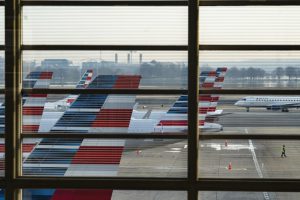BLOOMBERG
American Airlines Group Inc topped Wall Street’s expectations for third-quarter profit even as its forecast for the rest of the year fell short, underscoring the choppy environment as carriers are battered by climbing jet fuel prices.
Adjusted full-year earnings will be between $2.25 and $2.50 a share, compared with its earlier outlook for as much as $3.75, American said in a statement. The revision was closer to the $2.34 average from analyst expectations.
Carriers across the industry are being hit by a 26% jump since June in the price of jet fuel, which vies with labour as airlines’ largest expense. Because most tickets are sold well in advance, there’s normally a lag time of a couple of months before carriers can raise fares to begin recovering higher fuel costs. “While there were bumps along the way, such as significantly higher fuel costs that resulted in lower earnings in the quarter, our team continues to excel at controlling what we can control,” CEO Robert Isom told American workers.
Every 10-cent per gallon increase in the price per year of fuel adds $2 billion in costs for the US passenger and cargo airline industry, according to Airlines for America.
American said it expects year-over-year improvement in closely watched holiday demand. Bookings for November are currently less than 40% of capacity, but Chief Commercial Officer Vasu Raja said on a conference call that any added capacity sells “very quickly.” American continues to “see strength” in long-haul international markets this quarter.
The airline’s adjusted third-quarter profit of 38 cents a share topped the 25 cents expected by analysts. Revenue was $13.5 billion, matching analysts’ forecast. The carrier credited growth in corporate and government revenue and sales tied to its loyalty and credit card programs. Nearly two-thirds of revenue came from AAdvantage loyalty customers, American said. Fourth-quarter adjusted profit will be flat with 2022, American said, compared with analysts’ expectations for a 7-cent profit per share.
American could be flying 5% more capacity with its existing fleet, Isom said, and is working to improve aircraft utilisation. That effort will be helped by the carrier’s new pilot contract, which updated some rules that had limited mainline training and caused a supply bottleneck.
 The Gulf Time Newspaper One of the finest business newspapers in the UAE brought to you by our professional writers and editors.
The Gulf Time Newspaper One of the finest business newspapers in the UAE brought to you by our professional writers and editors.
